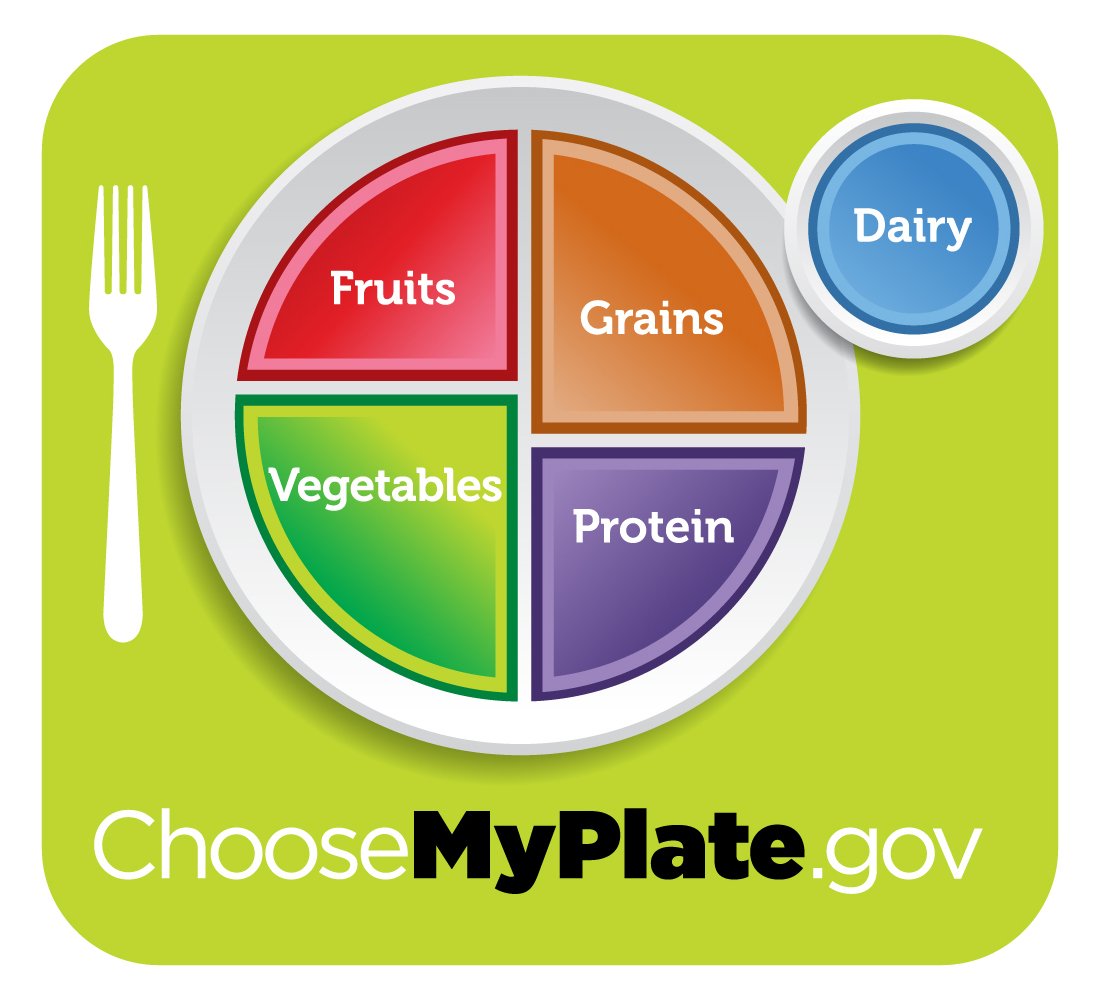MSU Students
To get connected with a Health Coach, schedule an appointment with TimelyCare.
Nutrition Guidelines:
The following are basic guidelines that you should know when constructing a healthy diet:
- Limit your total fat intake. Fat should supply less than 30% of your total daily calories. Choose lean meats, light-meat poultry without the skin, fish, and low-fat dairy products. In addition, cut back on vegetable oils and butter—or foods made with these—as well as on mayonnaise, salad dressings, and fried foods
- Limit your intake of saturated fat. This is the kind of fat, found mostly in animal products, that boosts blood cholesterol levels and has other adverse health effects. It should supply less than one-third of the calories derived from fat.
- Keep your cholesterol intake below 300 milligrams per day. Cholesterol is found only in animal products, such as meats, poultry, dairy products, and egg yolks.
- Eat foods rich in complex carbohydrates. Carbohydrates should contribute at least 55% of your total daily calories. To help meet this requirement, eat plenty of fruits and vegetables and six or more servings of grains (preferably whole grains) or legumes daily. This will help you obtain the 20 to 30 grams of dietary fiber you need each day, as well as provide important vitamins, minerals, and phytochemicals (plant chemicals essential to good health).
- Avoid too much sugar. Besides contributing to tooth decay, many foods that are high in sugar are also high in fat.
- Make sure to include green, orange, and yellow fruits and vegetables, such as broccoli, carrots, cantaloupe, and citrus fruits. The antioxidants and other nutrients in these foods are regarded as increasingly important in helping protect against developing certain types of cancer and other diseases. Eat five or more servings a day.
- Maintain a moderate protein intake. Protein should make up about 12% of your total daily calories.
- Eat a variety of foods. Don't try to fill your nutrient requirements by eating the same foods day in, day out. It is possible that not every essential nutrient has been identified, and so eating a wide assortment of foods helps to ensure that you will get all the necessary nutrients. In addition, this will limit your exposure to any pesticides or toxic substances that may be present in one particular food.
- Limit your sodium intake to no more than 2,400 milligrams per day. This is equivalent to the amount of sodium in a little more than a teaspoon of salt. Cut back on your use of salt in cooking and on the table; avoid salty foods; check food labels for ingredients containing sodium.
- Maintain an adequate calcium intake. Calcium is essential for strong bones and teeth. Get your calcium from low-fat sources, such as skim milk and low-fat yogurt. If you can't get the optimal amount from foods, take supplements.
- Try to get your vitamins and minerals from foods, not from supplements (with the exceptions listed below). Supplements cannot substitute for a healthy diet, which supplies nutrients and other compounds besides vitamins and minerals.
- Consider taking supplements of the antioxidant vitamins E (200 to 800 IU daily) and C (250 to 500 milligrams daily). Even if you eat a healthy diet, it's unlikely you will get these amounts of E and C. Also consider taking a basic daily multivitamin/mineral supplement, especially if you are a woman of child-bearing age (who needs extra folic acid, a B vitamin) or over age 60 (because of decreased nutrient absorption by the body).
- Maintain a desirable weight. Balance energy (calorie) intake with energy output. Eating a low-fat diet will help you maintain—or lower—your weight, as will regular exercise.
- If you drink alcohol, do so in moderation. That is one drink a day for women, two a day for men. A drink is defined as 12 ounces of beer, 4 ounces of wine, or 1.5 ounces of 80-proof spirits. Excess alcohol consumption leads to a variety of health problems, and alcoholic beverages can add many calories to your diet without supplying nutrients.
Updated Content.
ChooseMyPlate.gov
The USDA has created the ChooseMyPlate.gov to help the general public customize nutritional plan(s) for healthy eating. By going to www.choosemyplate.gov, one can create his or her's nutritional plan based on portion sizes and daily caloric requirements. This replaces the old Food Pyramid. ChooseMyPlate is now widely used by dieticians, clinicians, and fitness professionals.

Useful links
- Harvard School of Public Health: The Nutrition Source, Knowledge for Healthy Eating
- American Dietetic Association, Your Link to Nutrition and Health
- www.eatright.org